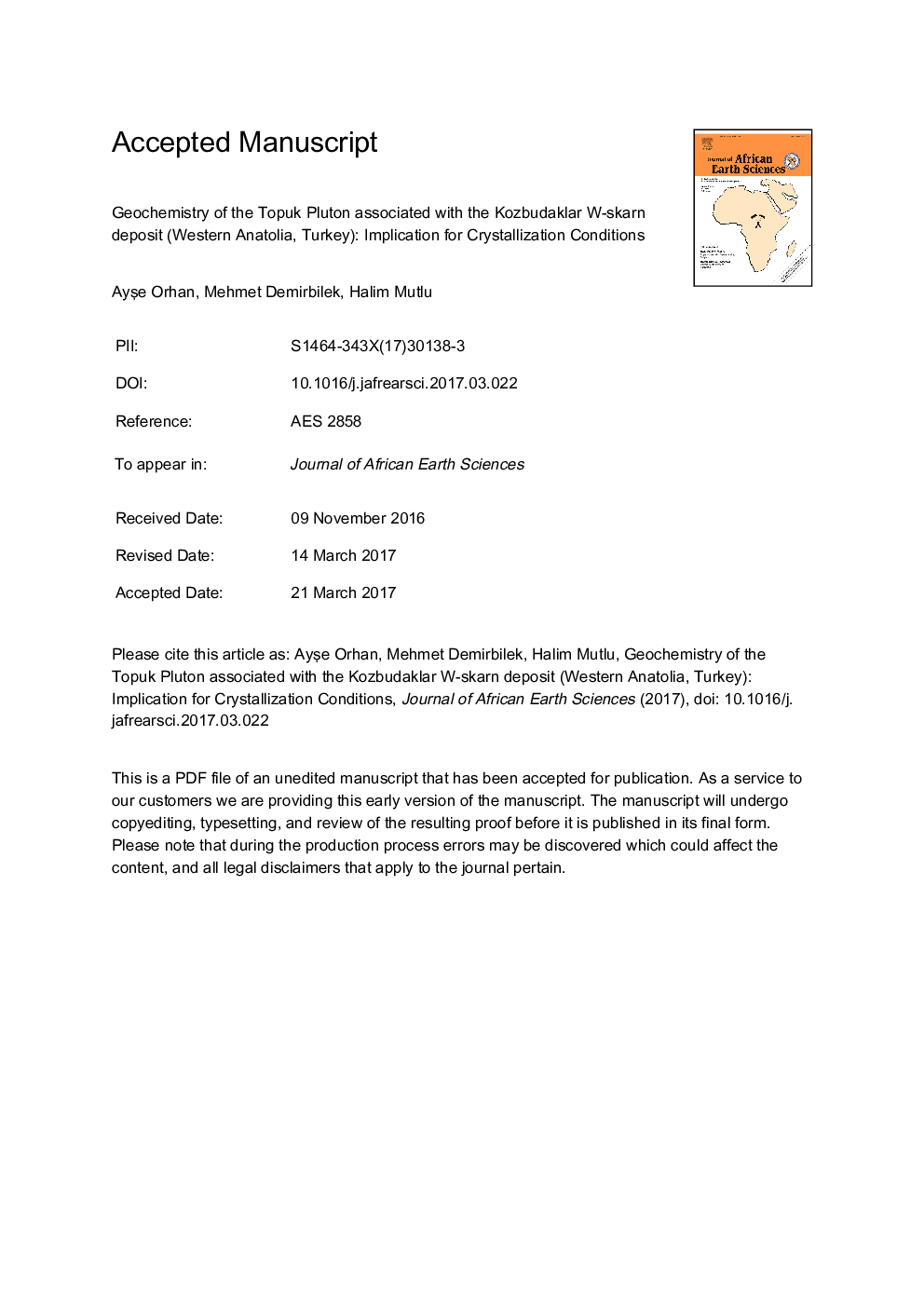| Article ID | Journal | Published Year | Pages | File Type |
|---|---|---|---|---|
| 5785468 | Journal of African Earth Sciences | 2017 | 69 Pages |
Abstract
Results of mineral chemistry analysis of the pluton yield that plagioclases are of oligoclase-andesine, amphiboles are of magnesio-hornblende and biotites are of ferro-magnesian composition. Amphiboles and biotites of granodioritic host rock are represented by calc-alkaline, I-type melt composition evolved in a subduction environment. Based on the results of plagioclase-Al in hornblende and amphibole chemistry data from the pluton, two different stages are proposed for the magma crystallization. The first stage was developed in a relatively deeper environment (>15 km) under high pressure (>4 kbar) and low log ÆO2 (>â17.6) conditions which reflect fractional crystallization and magma-mixing depth of basaltic magma and these conditions are not correlated with scheelite mineralization. The second crystallization stage of magma which proceeded at shallow depths (<6 km) was also developed in two separate phases with respect to P-T conditions. The first phase associated with scheelite mineralization is characterized by high temperature (788-854 °C), relatively high pressure (1.20-1.62 kbar), shallow depth (5-6 km) and high log ÆO2 (>â12.9 to â11.0) values are accompanied by high H2O contents (5.39-6.88 wt.%). High water content of melt gave rise to magma to ascend to shallower depths (4-3 km) and crystallization to proceed under low pressure (â¼1.00 kbar), high temperature (751-859 °C) and log ÆO2 (â13.3 to â11.0) conditions with lower water contents (4.55-5.50 wt.%).
Related Topics
Physical Sciences and Engineering
Earth and Planetary Sciences
Geology
Authors
AyÅe Orhan, Mehmet Demirbilek, Halim Mutlu,
